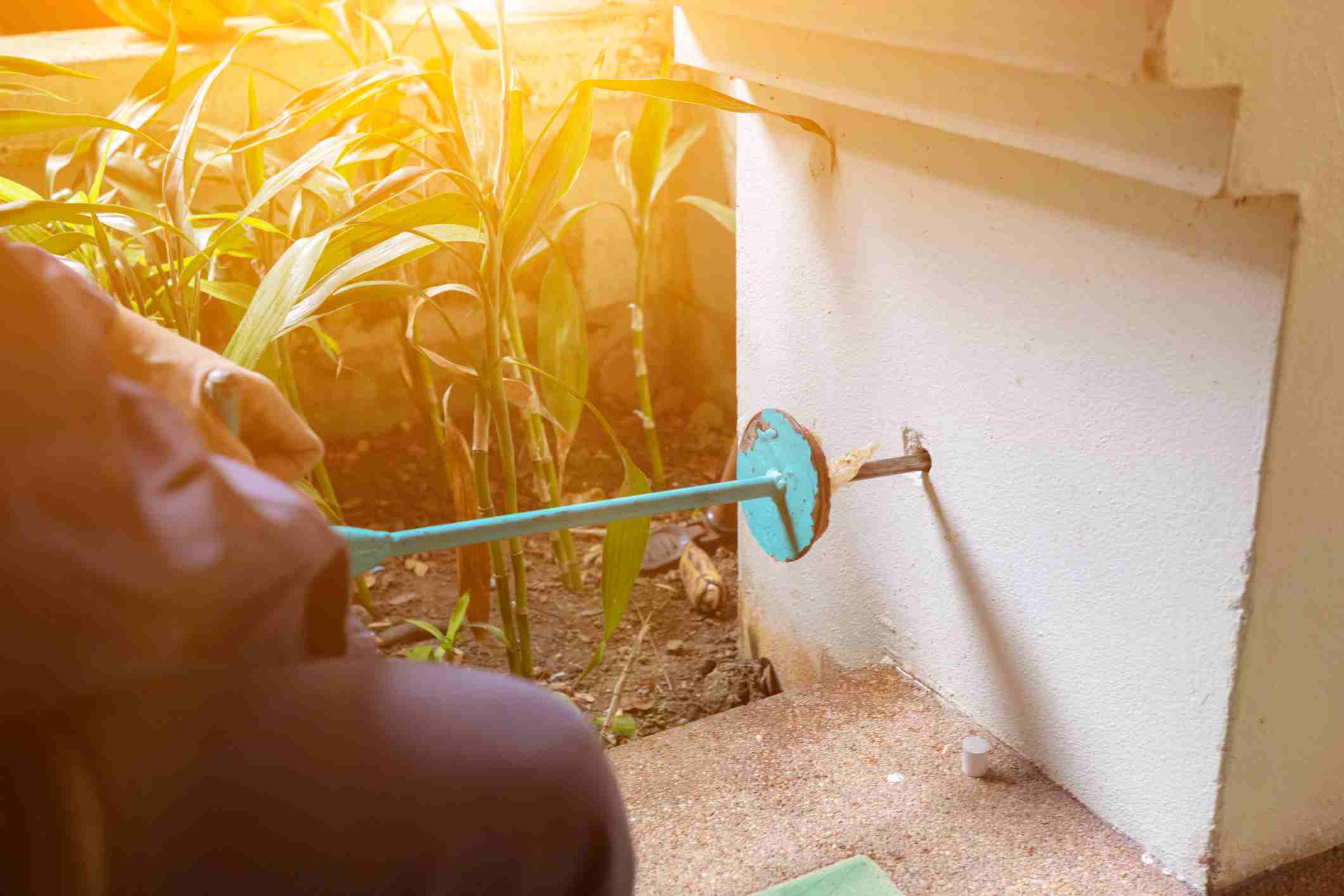Termite Treatment Application: Rodding vs Trenching
Choosing Between Rodding and Drilling for Termite Control Works Best
When you hear some of the terms used in termite control, they may seem confusing. Rodding, trenching, drilling — What do these things have to do with termites? Those are all terms for different methods of treating the soil around a home against subterranean termites. Subterranean termites build their nests underground, and they use mud tubes to travel from the nest to your house, so the only way to reach them is to treat the soil. Each of the treatments mentioned here is designed to create a long-lasting barrier around your home, to prevent termites from reaching the house. Which treatment is the best? There is really no one-size-fits-all answer when it comes to termite treatment, as the most effective treatment will be the one that fits your unique situation best.

What is Trenching for Termite Treatment?
In trenching, a shallow trench is dug around the foundation of the house and filled with liquid termiticide. While this is deadly for termites, it is safe for people and pets, and is environmentally low impact. Once the soil inside the trench has been treated, the trench is covered back up with soil. After this process is completed, there will be an invisible barrier around your home that lasts for several years, killing termites if they attempt to get through it.
What is Termite Rodding Treatment?
Rodding is a different way of doing the same thing, but rather than being poured into a trench, termiticide is injected into the soil, with rods acting as giant syringes. This option is usually chosen when it’s difficult to get to the exterior perimeter of the house because of dense vegetation. The advantage of rodding over trenching, of course, is that it is less invasive, in that a trench won’t be dug around the house.
Rodding vs Trenching: Which One is Better?
Both rodding and trenching can provide an effective barrier against termites. However, the most effective use of rodding and trenching is when they are used together. For this option, the trench is dug, and then rods are placed within the trench, to provide a deeper reach into the soil. This provides a more complete treatment than either treatment can provide alone.
Why Do They Drill Holes for Termite Treatment? When is Drilling Holes for Termites Needed?
Why would anyone need to drill for termite treatment, and what are they drilling? In some cases, it is appropriate to drill holes inside the house, in walls or other wooden surfaces, to apply termiticide directly to a colony. However, this is not the drilling we’re addressing here. Subterranean termites don’t build colonies in the walls, but in the ground near the house. To address this type of termite, drilling is used when there are slabs or other hard surfaces adjacent to the house’s foundation. Holes are drilled into the surface, and a rod is used to inject termiticide through the slab and into the soil.
Termite Drill Hole Plugs – What Are They and Why Are They Used?
After holes have been drilled and termiticide applied to the soil, the holes need to be closed. This is where termite drill hole plugs can come into play. Sometimes, the holes are closed with concrete, for a permanent seal. However, drill hole plugs, made of rubber or some other sturdy material, can be used on these holes, to allow them to be reopened and termiticide reapplied.
Is Drilling Necessary for Termite Treatment? Is There Effective Termite Treatment Without Drilling?
If the house is on a slab, or surrounded by concrete, drilling is necessary for targeted treatment, and to treat the soil adequately. To know whether or not your home needs drilling to treat termites, consult with a termite professional, because each property requires its own solution to termite problems.
Choosing Between Termite Control Methods: Drill Holes or Termite Trenching?
Drill holes and termite trenching are two versions of the same thing. They both create a barrier against termites, and that barrier lasts for a long time. Which one is best? It depends on the needs of your individual property. A termite control professional will be able to assess your property, and determine which of these is right for you.
FAQ
- Why Drill Holes in Concrete for Termites?
- If there is concrete adjacent to the foundation, this is the only way to get termiticide into the soil beneath it.
- What Kind of Termite Rodding Equipment is Used by Professionals?
- Professionals use rods of stainless steel or fiberglass, made with precision and equipped with nozzles that disperse treatment evenly.
- What’s the Best Option for Termite Treatment, Trenching or Drilling?
- This is highly subjective, and termite control experts decide on a case by case basis, after inspecting homes.
- Is Drilling Slab for Termite Control Effective?
- It is very effective, because it creates a barrier that prevents termites from reaching the house.
- How Deep is a Termite Rod Inserted into Soil?
- When used in conjunction with a six inch trench, a rod goes a full foot deeper, for a depth of 18 inches.
Deciding Between Termite Drilling Treatment and Termite Trench Treatment? Contact MightyMite Termite
To prevent termite damage in the Bay Area, call the termite control professionals at MightyMite Termite Services for a free inspection. At MightyMite, we’ve earned a reputation as experts in California termite control. We perform termite inspections to ensure that your home is free of termites and work hard to help you keep it that way, using termite treatments that are naturally derived, environmentally low-impact solutions. We diagnose and treat infestations with the most effective methods and unmatched warranties, solving your termite problems the first time, with an industry best “no call-back rate.” That, combined with our experience, technology, and highly trained professional staff, makes us the leading extermination company in the Bay Area. We understand that your home is your most important investment, so we work hard to provide excellent service, utilizing best practices to solve our customers’ termite problems. To schedule an inspection or learn more about our services, contact us through our website.







